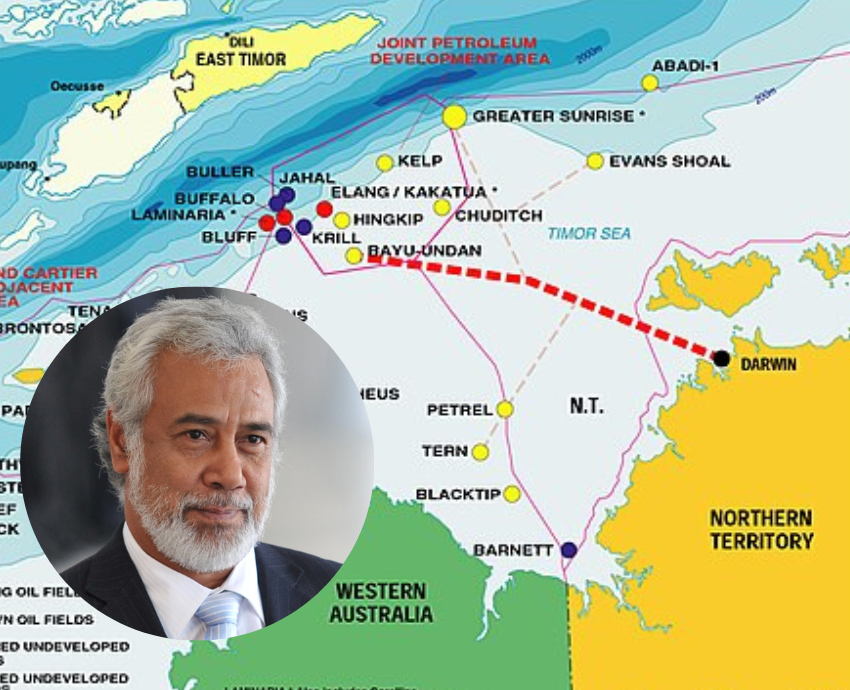
Timor-Leste voted in a new parliament on May 21 — one which will likely see the return of Xanana Gusmão as Prime Minister.
Gusmão’s National Congress for the Reconstruction of Timor-Leste (CNRT) won about 42% of the vote and 31 out of 65 parliamentary seats.
The Revolutionary Front for an Independent Timor-Leste (Fretilin) won 26% of the vote and 19 seats.
This was perhaps the last election where Timor-Leste’s aging independence heroes (heroes constitutionally enshrined as such) play a major role, with a burgeoning youth left grappling with an uncertain economic horizon.
While poverty remains a perennial issue in the country — with the United Nations estimating nearly half the population lives below the extreme poverty line of A$2.90 a day and child stunting affecting over half the population — oil drew most attention this campaign.
Gusmão, former leader of the armed wing of Fretilin (known as Falintil), was Timor-Leste’s first president between 2002‒07 and prime minister between 2007‒15. He has championed the Tasi Mane project, which aims to process gas from the Greater Sunrise offshore fields on home soil. The election result gives him a clear mandate.
Australian energy company Woodside owns 33.44% of the Greater Sunrise offshore field and the project relies on the company’s technical capacity. It will take some convincing — in July 2020 they revalued their stake in the field down to zero dollars.
This election and the decisions to be made in its aftermath are made vital by Timor-Leste’s dwindling Petroleum Fund (PF). The PF, set up in 2005, was designed to receive all oil and gas income and to securely invest it — a way to benefit “current and future generations”.
La’o Hamutuk (Walking Together), a locally-based research NGO, highlighted that since the first withdrawal in 2007, the PF has paid for 86.2% of all state spending; since 2005 it has received US$23.2 billion in oil income, US$9.1 billion in returns on its investments, and withdrawn US$12.8 billion to leave the fund at US$19.5 billion at the end of June 2021.
In 2018, spearheaded by Gusmão, state-run oil company TimorGAP borrowed $US650 million from the PF to buy a controlling stake in Greater Sunrise from ConocoPhillips and Shell. In 2019, ConocoPhillips sold its majority stake in the Bayu-Undan field, completely exiting Timor-Leste.
In other words, Timor-Leste has hedged its bets on the success of this offshore gas field while multi-national oil and gas corporations are getting the shivers.
The Tasi Mane project — an amalgamation of the Greater Sunrise field, a port and petroleum logistics supply base in Suai, an oil refinery in Betano, two onshore oil pipelines between Suai and Betano, a 150 kilometre highway between Suai and Beaçu, airports in Suai and Viqueque, new towns and water supply — has been met by intense and divisive debate over its feasibility.
An estimated US$19 billion dollars of capital investment (excluding operational costs), equal to the entire PF, would be needed to build Tasi Mane, which has led independent commentators, officials and academics to label it economically unsound.
Charles Scheiner, from La’o Hamutuk, claims that the future benefits of Tasi Mane are greatly exaggerated, with foreign companies claiming the share of the spoils. He argues the project heightens social conflict over displaced communities, uses valuable land and shoreline, worsens public health and degrades the environment all while offering little in the way of job prospects.
As the existing Bayu-Undan field nears depletion, the clock is ticking. If Tasi Mane is not completed soon Timor-Leste will be unable to finance the government’s budget and the nation’s economy.
The tight-rope Timor-Leste has been forced to walk should be understood as situated in global capitalism’s North/South divide. Poorer countries of the Global South are left with little in the way of options while big multi-nationals have the freedom to cherry-pick where they will make most profit.
Timor-Leste will need help if it is to develop the Greater Sunrise processing facilities on home shores. Where that help comes from is proving tricky.
Gusmao believes Australia — which disgracefully bugged important oil negotiations under the John Howard government — owes it as reparation for “exploiting the situation in Timor-Leste”. Potential aid from China has been used to leverage support from Australia, which remains perennially worried about its biggest trading partner’s presence in the region.
For now, this proposition is hypothetical; more important for leverage while China re-evaluates its Belt and Road Initiative.
[This article has been updated.]